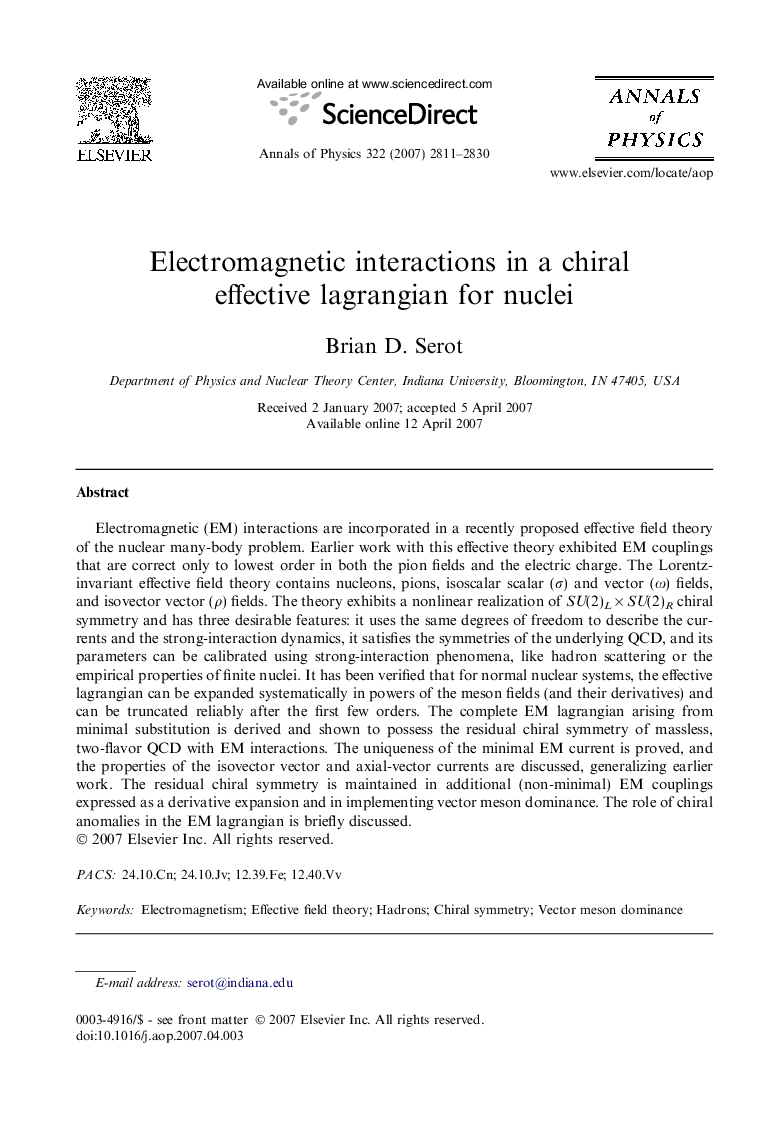| Article ID | Journal | Published Year | Pages | File Type |
|---|---|---|---|---|
| 1855285 | Annals of Physics | 2007 | 20 Pages |
Electromagnetic (EM) interactions are incorporated in a recently proposed effective field theory of the nuclear many-body problem. Earlier work with this effective theory exhibited EM couplings that are correct only to lowest order in both the pion fields and the electric charge. The Lorentz-invariant effective field theory contains nucleons, pions, isoscalar scalar (σ) and vector (ω) fields, and isovector vector (ρ) fields. The theory exhibits a nonlinear realization of SU(2)L × SU(2)R chiral symmetry and has three desirable features: it uses the same degrees of freedom to describe the currents and the strong-interaction dynamics, it satisfies the symmetries of the underlying QCD, and its parameters can be calibrated using strong-interaction phenomena, like hadron scattering or the empirical properties of finite nuclei. It has been verified that for normal nuclear systems, the effective lagrangian can be expanded systematically in powers of the meson fields (and their derivatives) and can be truncated reliably after the first few orders. The complete EM lagrangian arising from minimal substitution is derived and shown to possess the residual chiral symmetry of massless, two-flavor QCD with EM interactions. The uniqueness of the minimal EM current is proved, and the properties of the isovector vector and axial-vector currents are discussed, generalizing earlier work. The residual chiral symmetry is maintained in additional (non-minimal) EM couplings expressed as a derivative expansion and in implementing vector meson dominance. The role of chiral anomalies in the EM lagrangian is briefly discussed.
